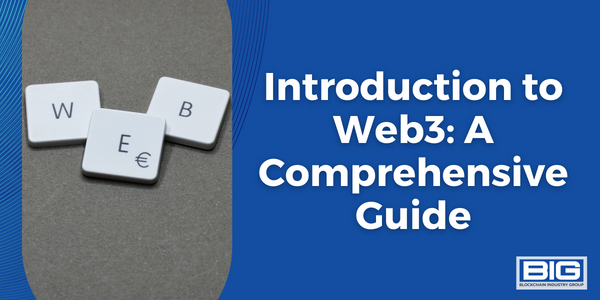
Web3 is the next iteration of the Internet, and it promises to bring a lot of exciting changes. This new technology offers a decentralized, more secure, and more equitable way of accessing and sharing information online. It is a vital step in the evolution of the Internet, and it has the potential to change the way we use the Internet forever. In this guide, we’ll dive into what Web3 is, why it’s important, and the key concepts you need to know.
A. Definition of Web3
Web3 refers to the third iteration of the Internet, also known as the decentralized Web. The main difference between Web3 and the current Web (Web2) is that Web3 is built on decentralized technologies such as blockchain, peer-to-peer networks, and smart contracts. This means that data and information is stored on a network of computers rather than on a centralized server, making it more secure and resistant to censorship.
B. Importance of Web3
The importance of Web3 lies in its potential to solve some of the biggest problems with the current Internet. For example, Web2 is centralized, which makes it vulnerable to cyberattacks, data breaches, and censorship. In addition, there are many instances of user data being sold to third-party companies, which raises privacy concerns. With Web3, data is stored on a decentralized network, making it much more secure.
Web3 also has the potential to create a more equitable and transparent online experience. Decentralized systems eliminate the need for intermediaries, reducing the risk of fraud and allowing for more direct and fair transactions. This means that people from all over the world can participate in the digital economy without the need for middlemen.
C. Key Concepts in Web3
There are several key concepts in Web3 that you need to understand in order to fully grasp the potential of this new technology. These include:
- Decentralized systems: In a decentralized system, information and data are stored on a network of computers rather than on a centralized server. This makes the system more secure and resistant to censorship.
- Peer-to-peer networks: A peer-to-peer network is a network of computers that communicate directly with each other, without the need for a centralized server. This is the backbone of Web3, allowing data to be securely transmitted from one user to another.
- Blockchain technology: Blockchain is a decentralized ledger that allows for secure, transparent transactions. In Web3, blockchain is used to store information and data on a decentralized network, making it resistant to censorship and tampering.
- Smart contracts: Smart contracts are self-executing contracts with the terms of the agreement between buyer and seller being directly written into lines of code. These contracts can be automatically executed when certain conditions are met, reducing the need for intermediaries and increasing transparency.
The Future of Health and Medicine
—
The Impact of Technology on Military Strategy and Weapons
—
The Legal Industry and the Promise of Future Technologies
In conclusion, Web3 is the future of the Internet, offering a decentralized, secure, and equitable online experience. It has the potential to solve some of the biggest problems with the current Internet, such as vulnerability to cyberattacks, data breaches, and censorship. With Web3, we can create a more secure, transparent, and fair online world, and it’s exciting to think about what this new technology will bring in the years to come.



